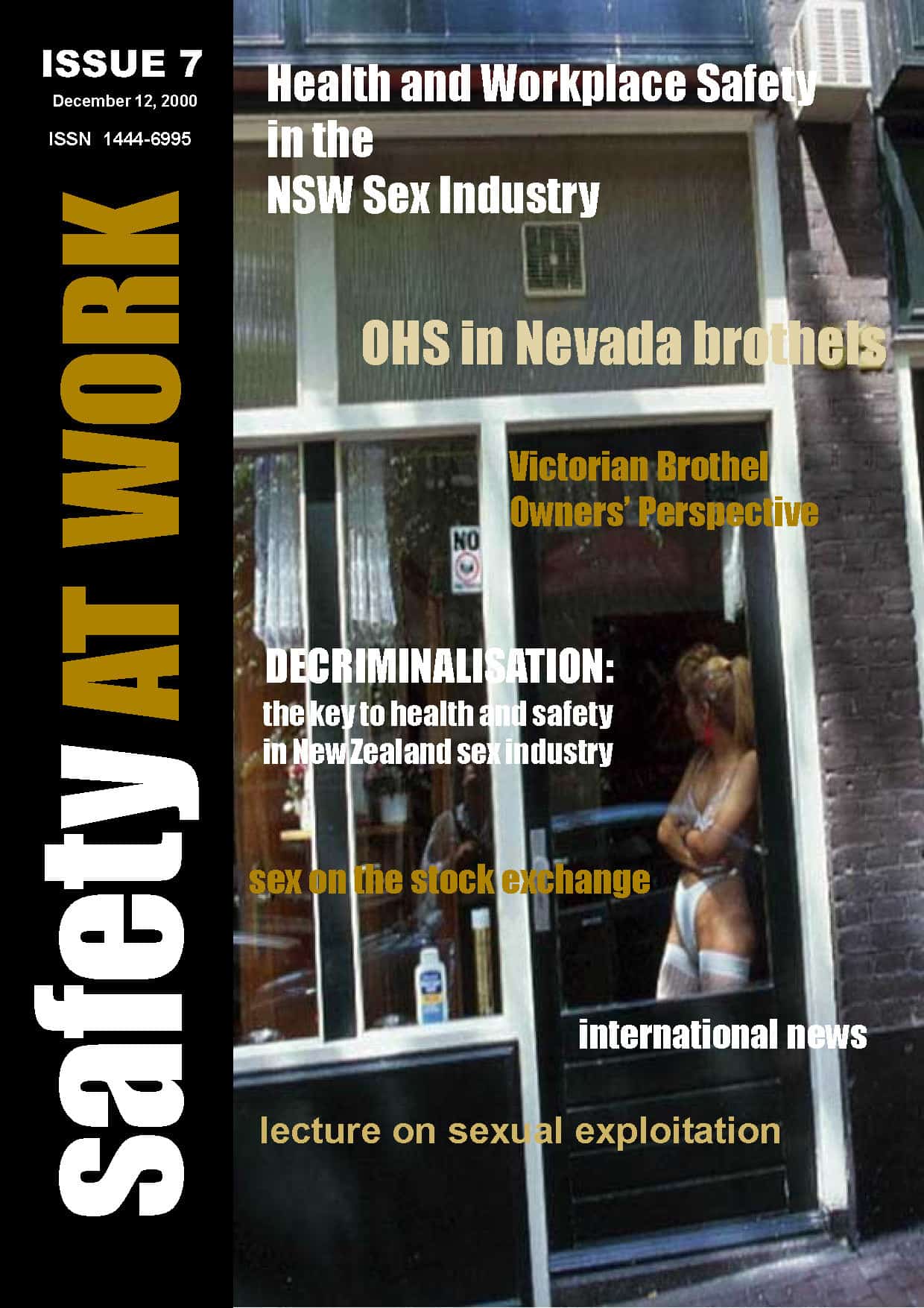Already a member? Log in here
Category: risk
Sex Work regulations review safety obligations

Consumer Affairs Victoria (CAV) is seeking public comment on some proposed revisions of the Sex Work Regulations. Several revisions specifically address workplace safety issues but also indicate out-of-date thinking on worker safety and safety management.
Victoria licences its brothels and, as such, the occupational health and safety (OHS) laws apply as they do to all workplaces. However, the regulators of the sex industry seem to perceive OHS usually in terms of sexual health and hygiene even though statistics have shown that these issues are low risk hazards. This perception has lasted well over a decade as this 2000 article from National Safety magazine shows. Continue reading “Sex Work regulations review safety obligations”
Safety is the highest priority. Really?
Workplace safety can have a bizarre logic. A recent example can be seen in the continuing controversy about the deaths of two workers on a construction site in Western Australia.
In November 2015 two workers Joe McDermott and Gerard Bradley were crushed to death by a concrete slab while on a break at a Jaxon Construction site in East Perth. The Construction Forestry Mining and Energy Union (CFMEU) concerns about the site have been discussed on ABC television last week and on the union’s social media. WorkSafe WA is investigating.
Some of the statements by Kim Richardson, the construction director of the Master Builders Association of Western Australia (MBAWA) seem ill-timed but reflect many of the perspectives held by employers towards occupational health and safety (OHS).
Shortly after the the incident Richardson stated that
“All workers have the right to go to work and have the expectation and the right to come home safely,…. That did not happen.
There’s been a move to have a tremendous amount of paperwork where people will tick boxes to say they have a safe system in place. But that doesn’t guarantee safe systems of work. The way the work is performed is where the focus needs to be.”
Richardson’s complaints seem to be that
- occupational health and safety has too much paperwork
- the paperwork misrepresents the level of safety at the workplace
- greater attention should be given to how work is performed.
Few OHS professionals in Australia would argue these points but there are some uncomfortable implications in these complaints.
Political disregard for OHS…. again
In 2014 during an election campaign (now Premier of Victoria) Daniel Andrews stated:
“Labor will introduce random breath testing for all Members of Parliament during sitting weeks” and
“Labor will also legislate to give the Chief Justice, the Chief Judge and the Chief Magistrate the power to require these random tests of the judiciary.”
At the time potential drug and alcohol testing on Victorian construction sites was topical.
This week the first pledge was dropped and the second was obfuscated. Where was the safety justification for this pledge in the first place? What was Andrews thinking?
One view of how OHS needs to change
In a recent interview Richard Coleman states that the biggest opportunity for the occupational health and safety (OHS) profession is through health. He is another in the a long line of safety people (myself included) who advocate looking outside the traditional safety perspective to better understand safety. But health may not be the best option as the health profession can have just as much myopia as the safety profession. Continue reading “One view of how OHS needs to change”
Talking about safety – old skills in new ways
Australia’s latest Prime Minister, Malcolm Turnbull, has a strong background in technology investment and is urging the country to embrace innovation. This has generated a focus on information technology start-ups but it may also create opportunities for occupational health and safety (OHS) professionals, if they are willing to change.
There has been a quick growth in
Zero Harm is dead, long live ……whatever comes next
Zero Harm was an enormously popular motivational aim for OHS. It originated as a response in some large organisations where safety performance was plateauing and who felt that they had achieved as much as they could in redesigning work and improving physical safety. The plateauing led to frustration and a reassessment of safety practices. The remaining variable was seen to be the worker and so slogans were instigated to increase the care (or mindfulness) of workers.
However, this assessment seems to have taken the traditional, and shallow, approach. One variable is, of course the worker but the assessors failed to see that the organisational structure and operations were, or should be, variable too. In the words of the current Australian Prime Minister, Malcolm Turnbull, this variability, this adaptability, could lead to innovation, economic growth and increased sustainability.
The promotion of the zero harm approach to safety could be seen as a safety dead-end and an indication that organisations were fixed on only seeing the dead-end. Safety thinkers, and there are a few, offered ways out of the dead-end by thinking differently about what we know.
